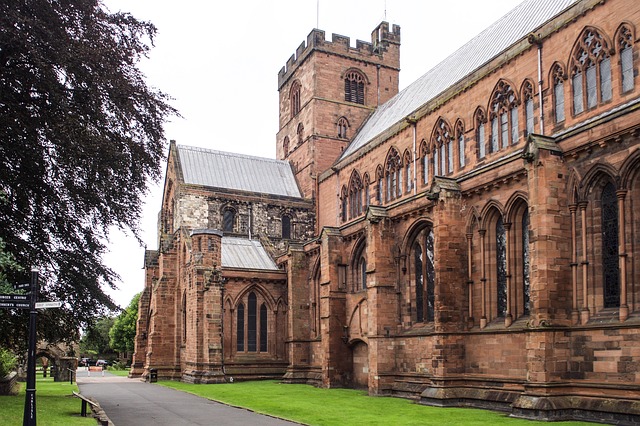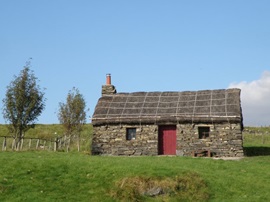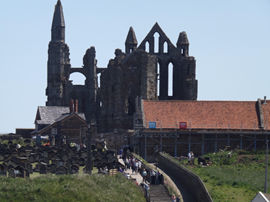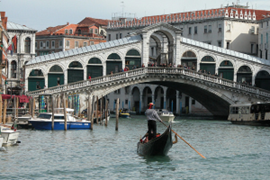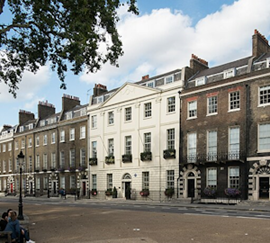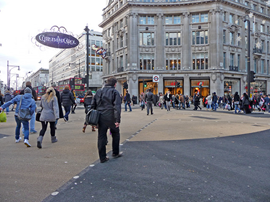Carlisle cathedral
Contents |
[edit] Introduction
Carlisle's cathedral, small in scale but significant in many ways, played an important role in the region's long - and sometimes turbulent - history.
[edit] History
Carlisle cathedral was initially a modest Norman priory church built in 1122 over the ruins of an existing structure. Some portions of this Norman church remain in the south transept and two bays of the nave, although much of it has been destroyed or removed over the centuries.
Constructed from local red sandstone (which would prove to be an ongoing issue due to its tendency to become misshapen and discoloured over time), the church has gone through a series of changes. From the time it was constructed, the building’s piers slowly started to to lean as a result of subsidence, and its structural supports started to sink into the marshy land.
The first renovation began in the 13th century during the reign of Edward I who held his parliament in Carlisle and worshipped at the cathedral. These modifications in the Gothic style expanded the cathedral and changed its orientation. However, this work was severely damaged shortly after its completion in 1292, when a fire was intentionally set in the city by a man upset about a legal matter that was not decided in his favour. The fire spread to the cathedral and caused significant damage that took several decades to repair. However, the Norman tower subsequently collapsed onto the north transept.
[edit] The east window
By about 1350, one of the most important features of Carlisle cathedral was complete. The east window, with its elaborate tracery and glass, is still thought to be the largest in the Flowing Decorated Gothic style in England.

|
| The stained glass and tracery of the east window of Carlisle cathedral. |
The east window is thought to be the work of Ivo de Raughton, considered one of the most accomplished architects of decorative tracery in Northern England at the time.
While the upper portion of the window is original, the lower nine sections were created by John Hardman and date from 1861. They were installed as replacements for medieval windows removed at the time of the Civil War.
[edit] The curse of Carlisle
Renewal of the monastic buildings continued in the 15th and early 16th centuries, but in 1525, there were new troubles in Carlisle. The city’s association with the Border reivers (a group of thieves and raiders who caused chaos along the border between England and Scotland), resulted in the Archbishop of Glasgow issuing a 1,000+ word curse on the city.

|
| The cursing stone is carved with the words of the Archibishop of Glasgow. It is on display at Tullie House, Carlisle. |
This legendary pronouncement became linked to misfortunes that occurred in Carlisle (including floods, diseases, business failures and even misfortunes associated with the Cathedral).
Like many churches, Carlisle cathedral was damaged during the English Civil War. The Scottish Presbyterian Army took the opportunity to destroy part of the nave and used the stones to fortify Carlisle Castle. They also demolished the cloister and chapter house during and removed a modest spire.
During the Jacobite rebellion, the remaining portion of the nave was briefly used as a prison, but no further damage was inflicted on the building.
[edit] Restoration by Ewan Christian
Following several clumsy renovations during its nine century history, Carlisle cathedral was finally given an extensive restoration between 1853 and 1870. Undertaken by Ewan Christian (the British architect and one time president of the RIBA best known for his design of the National Portrait Gallery), this lengthy project preserved some of the original noteworthy characteristics of the building and added some new ones.
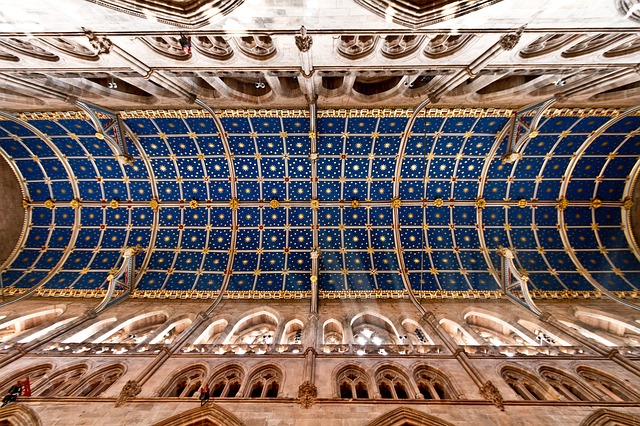
|
| The Carlisle cathedral ceiling by Owen Jones (1856). |
It was during this period that Owen Jones updated the ceiling based on the original medieval style. Considered one of the finest decorative artists of the period, Jones came up with a detailed motif that featured angels and stars.
The ceiling was most recently refurbished in 1970, and the east window was restored in 1982.
[edit] Related articles on Designing Buildings
IHBC NewsBlog
IHBC Publishes C182 focused on Heating and Ventilation
The latest issue of Context explores sustainable heating for listed buildings and more.
Notre-Dame Cathedral of Paris reopening: 7-8 December
The reopening is in time for Christmas 2025.
Stirling Prize-winning Salford building to be demolished
The Centenary Building will be bulldozed as part of the wider £2.5bn Crescent regeneration project
Volunteers work to transform 100-year-old ‘hidden’ building into bothy
The building, named Druimnashallag, is located southeast of Oban.
The new ‘Arches for HERs’ Demo site, from the Getty Conservation Institute via HE
It shows how organisations responsible for historic environment records (HER) management can benefit from its powerful features.
ICOMOS-CIF 2024 Symposium celebrates 40th anniversary in Venice
It aims to critically review current practices and theories of conservation of built heritage around the world, and more.
HES establishes new national centre for retrofit of traditional buildings
HES plans to develop the centre follows £1m of funding from UKRI Arts and Humanities Research Council.
High Court rejects oral appeal against tower block decision in historic Bloomsbury
The request was for a full Judicial Review hearing against Camden Council’s approval of a 74m-high tower block in Bloomsbury.
Mayor of London and Government announce bold plans to transform Oxford Street
Plans include turning the road into a traffic-free pedestrianised avenue, creating a beautiful public space.
Crystal Palace Subway, for 160th anniversary
The remarkable Grade II* listed Crystal Palace Subway in South London begins a new era following major restoration.







